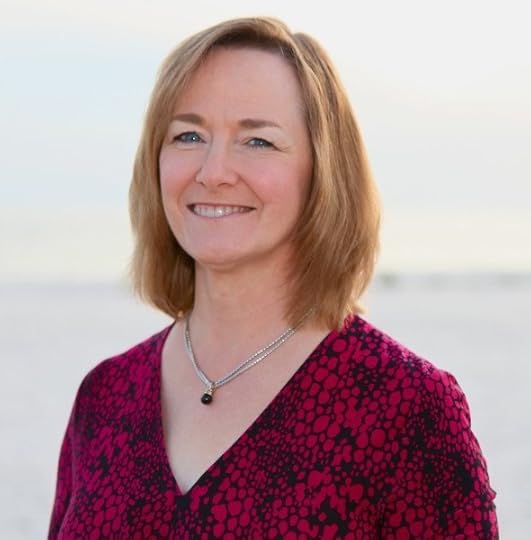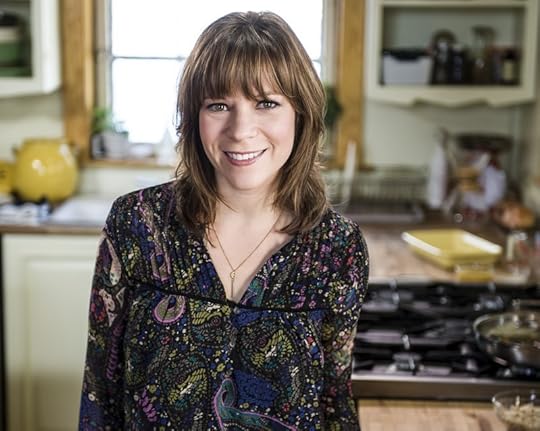Christy Potter's Blog, page 10
May 9, 2014
Going Gray: a Special Mother’s Day Episode with Guest Lynn Sandberg
Lynn Sandberg is the author of “Heaven on Earth: A Biblical Model for Parenting” and leads conferences on the topic of parenting. For nine years she has taught these principles to the inmates at the local jail as a volunteer chaplain with the Good News Jail & Prison Ministry. From this experience course material is now available that is based on the principles that are taught in the book.
Lynn has been married to Bob Sandberg for 37 years, is a mother of three grown children and grandmother of four. She is a graduate of The University of South Alabama in Speech Pathology. Early on she chose to dedicate her life to raising her children. She now has a passion to teach families principles to live happy, productive and peaceful lives.
Click the player at the bottom to hear the full interview, or download it for free in iTunes.
The post Going Gray: a Special Mother’s Day Episode with Guest Lynn Sandberg appeared first on Christy The Writer.
May 2, 2014
Christy Writes: Burn, Baby, Burn!
Back in Kansas, one of the most identifiable signs of summer is the controlled burn. Once the wheat is harvested, the farmers need to get rid of the stubble to prepare the fields for the next crops, and one of the ways they can do that is to burn it off. Not everyone does it, of course, but a common sight as I was growing up was the prairie horizon at night, seamlessly dark where the sky meets the earth but for the bright orange and yellow glow every few miles, indicating the wheat was in and the cycle was continuing.
When I was very little, controlled burns were scary. All I saw was fire, and fire is bad. They taught us that in school. Stop, drop and roll! Don’t play with matches! Campfires were good of course, because s’mores, but even that you let the adults handle. When I got older, though, I understood that in the case of controlled burns, fire was good. It cleared away the old stuff that was left behind, the remnants of the wheat crop that had to be disposed of before a beautiful new crop could grow.
I give you that bit of agricultural education so I can inform you that I no longer have meltdowns. I have emotional controlled burns.
Meltdowns are for toddlers and teenaged girls. To call it a meltdown when an adult woman hits her tipping point is like calling Woodstock a concert. We’ve had so much going on around here over the past few weeks, between moving our home to a new state, relocating Guy’s shop, painting and cleaning and unpacking and trying to remember what is in which box (you can tell when I got tired of packing by the number of expletives written on the boxes in Sharpie), all while trying to prevent my cats from bugging out at being moved and still keep up with writing assignments, because it may take the post office six weeks to forward my mail, but Capital One could find me in a mole hole in the foothills of the Great Smoky Mountains. I’ve been a rock. A warrior. An impenetrable fortress of stability. And then I noticed we were out of napkins and I completely lost my stuffing.
I seriously think I cried out half my body weight. I cried about the important things first: frustrations and disappointments in my life recently, things I had pushed aside and not dealt with because I was afraid they’d make me cry. Then I cried because the new house was such a mess. I cried because I got paint on the carpet, right next to the cat puke. I cried because I was in a new state and didn’t know anyone. I cried because it’s going to take me more than an hour to get into New York City now. Then I cried because I wanted chocolate and we didn’t have any chocolate and it was too early for wine and my heart got broken 463 times in high school not even counting the time I didn’t make the drill team, and there’s so much violence in Mexico and our streams are polluted and too many kids are hungry and Sarah Palin is still making the headlines and oh good God now what is that on the carpet?!
The most important thing to remember about a controlled burn is to keep an eye on it. Any farmer will tell you that if you don’t watch it, the wind could shift and the fire could be heading right for your house. In the same way, I have to stop my emotional controlled burns before they get away from me and I stop showering or getting out of bed at all. But a good sob-fest, interspersed with bursts of anger and little hiccupy bits of reflection, is truly a controlled burn for the soul. It clears away all the leftover garbage I don’t need so I can turn over the new soil and get ready for what comes next.

Photo courtesy of USDA NRCS, Bob Dayton, Iowa
The post Christy Writes: Burn, Baby, Burn! appeared first on Christy The Writer.
April 21, 2014
Christy with a Camera: April 2014

Great Swamp Wildlife Refuge, New Vernon, NJ

Brunch Bellini, Co-op Restaurant, NYC
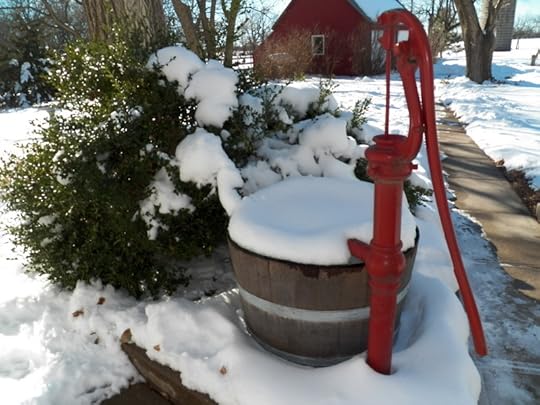
Christmas on the Farm

Flowers in the Sunlight

Stone Steps
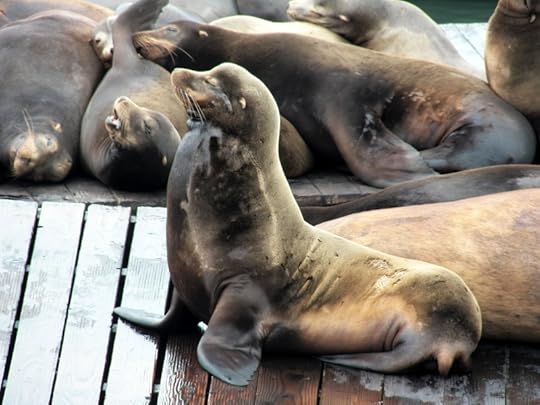
Sea Lions, Fisherman’s Wharf, San Francisco
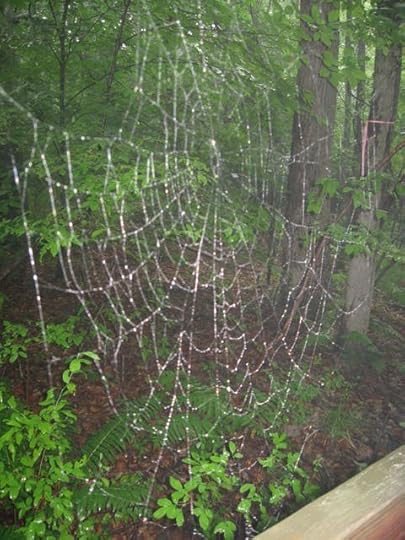
Spider Web

Gateway Arch, St. Louis, MO

Earth Mural, Alphabet City, New York, NY
April 20, 2014
Christy with a Camera

Great Swamp Wildlife Refuge, New Vernon, NJ

Brunch Bellini, Co-op Restaurant, NYC

Christmas on the Farm

Flowers in the Sunlight

Stone Steps

Sea Lions, Fisherman’s Wharf, San Francisco

Spider Web

Gateway Arch, St. Louis, MO

Earth Mural, Alphabet City, New York, NY
Going Gray: with Award-Winning Military Romance Writer Heather Ashby
My “Going Gray” guest today is award-winning author Heather Ashby, a Navy veteran, whose mother was one of the original Navy WAVES in WWII.
After leaving the service, Ashby taught school and raised a family while accompanying her Navy husband around the U.S., Japan and the Middle East.
In gratitude for her Army son’s safe return from Afghanistan and Iraq, she now writes contemporary military romance novels, donating a percentage of her royalties to support wounded warriors and their families. Half of all proceeds from her book sales will benefit Fisher House Foundation– Helping Military Families.
Her book, Forgive & Forget, which started as a stand-alone project under the title Red Sky at Night in 2010, won the Florida Writer’s Association Book of the Year Award. Her original manuscript evolved into a four-book series contracted for publication by Henery Press in 2013. Forgive & Forget, Ashby’s debut novel, was named a Best of 2013 Book by Suspense Magazine. Forget Me Not, Ashby’s second title in the “Love in the Fleet” series earned her a Romance Writers of America (RWA) Golden Heart® nomination in 2012.
Heather is a member of Romance Writers of America® and several specialty chapters, including First Coast Romance Writers. She is also proud to belong to the military author group RomVets, “military women who have turned the sword to pen.”
She lives in Atlantic Beach, Fla., with her retired Naval engineer husband and three rescue cats. They both continue to be active in the Jacksonville, Fla., military community.
Click on the photo below to open the podcast player. Right click on the player to download the podcast, or download it for free in the iTunes store.
Christy’s Celebs: Food Network’s Amy Thielen Cooks Like a Midwesterner
To say that Amy Thielen’s life has changed a lot on the past few years is a mild understatement.
The star of Food Network’s new show, “Heartland Table,” held a bloggers’ roundtable discussion recently, in which a handful of us had a chance to pick the affable Amy’s brain about cooking, family, balance, and the changes that swept her from some of New York City’s most prestigious kitchens back home to her Midwestern roots.
The mommy bloggers participating in the discussion wanted to know, of course, how a professional chef gets her six-year-old son to eat. As an arts blogger and fellow Midwesterner transplanted to the New York metro area, I pretty much just wanted to talk about meat and potatoes. And New York, of course.
“I was at a food function not long ago and I heard someone say, after surveying the huge spread, ‘Wow, I’m just gonna eat like a Midwesterner,’” I told Amy. “I wasn’t aware we had an eating style, but apparently we do. Has the Midwestern palate evolved much since the meat and potatoes days?”
Amy just laughed and said she wasn’t aware we had an eating style either.
“It’s funny – I noticed something when I moved back,” she said. “We’re much more informal in the Midwest. It’s a little fancier out in New York, especially where I was, in Manhattan and Brooklyn.”
The Midwest, by contrast, has more of what she calls a “dip culture.” Before anyone gets offended, she means chip dip. Bean dip. Seven-layer dip at a potluck. Just thinking about it is giving me a hankering for some Fritos.
“It’s a bar and dip culture,” she said. “People make bars and dips to take to parties out here. Parties are much more informal. One-pot dishes and casseroles are more common here. I think that’s a nice thing.”
Amy spent seven years cooking professionally in New York under David Bouley, Daniel Boulud, Jean-Georges Vongerichten and Shea Gallante. That’s a huge change from her early life, growing up a few miles from the headwaters of the Mississippi River in Minnesota. And, you know, eating dip.
“I used to work 80 to 90 hours a week,” Amy recalled. “We were often opening restaurants, so it was really intense. I didn’t know you could have a restaurant and work 50 hours a week like a normal person.”
She kept up that pace until she was six months pregnant, when she finally decided to take a few steps back. In 2008, she and her husband moved back to their native Minnesota, and Amy began writing. She freelanced for the Minneapolis Star Tribune, doing features for their food section, and started a blog. She also got a regular column in the Park Rapids Enterprise, a small local paper, where she started finding her food writing voice.
“At that time, I was really figuring out who I wanted to write to,” she said. “That was a big part of coming home from the big city.”
She also wrote for Men’s Journal, and Saveur, and won a James Beard Journalism Award in 2011. As if that wasn’t enough to keep her busy, she also taught cooking classes in her home kitchen, and began drafting a proposal for a cookbook.
“I really wanted to spend most of my time with my son, who was still little at the time,” Amy explained. Fortunately, her connections in the New York publishing world came through, and her cookbook, “The New Midwestern Table,” was bought by Clarkson Potter. From there, Random House Television decided to develop it into a show. The Food Network bought it, and you can now watch “Heartland Table” Saturdays at 10:30 a.m. EST.
So although Amy went from the glitzy but grueling world of New York City fine dining to a more homespun way of cooking, there’s still a little glamor involved when the rolling cameras zoom in on her cooking at her central wood stove, using local ingredients. Her son, well, he’s not all that enamored with the whole thing. Sometimes he wants to be on the show, other times, not so much.
“When he doesn’t want to be on it, he doesn’t have to be,” Amy said. “We had a story in Country Living magazine, and he wasn’t very interested in being in the photo, so I said that was okay. Then when the magazine came out, he said, ‘How come I’m not in the family?’ So he wants to be in it, but he doesn’t want to have to participate.”
Having a trained chef for a mother hasn’t changed his typical childhood eating habits, either. In fact, Amy said, she “drew a somewhat picky eater.”
“When he was little, he’d eat everything. He loved kimchi. He ate avocado. And then something switched in his brain and his tastes got really simple.”
Simple being a relative term, of course. Cake, for example, he won’t eat unless it has “some kind of pizzazz,” like colored frosting, sprinkles, or candy on it. I can totally get behind that logic.
I find it interesting that a professional chef, trained in some of the finest dining restaurants in Manhattan, is now making her mark with the Midwestern food she grew up on.
So let’s cut to the chase here: besides bars and dips, what is “Midwestern food”?
“It means something different to everybody,” Amy explained. “It’s really like any kind of American regional cuisine. There are all different kinds of influences, different mixes at any point in time. There’s some Scandinavian, which has been around for a long time, and some southeast Asian, which is somewhat of a newer influence in the area. Those are the kinds of things that are starting to enter the Midwest culture.”
The conversation shifted to holiday food, and comfort food – like stuffing, or, as it’s regionally known, dressing.
“We make our dressing out of butter, held together with a little bit of bread,” Amy joked. “I’m just kidding. My mom’s is that way though. When you look at things in Tupperware later, they’re all congealed on bottom, from so much butter.”
And proving once again that my question about “eating like a Midwesterner” did have some validity, she described the typical Midwestern holiday table as “pretty generous.” Although appetizers aren’t necessary in light of how much other food there is, in Minnesota at least, there usually is an appetizer, and it’s often … are you ready for this? Seafood.
“We don’t get seafood here a lot, so it’s a traditional starter for the holidays,” she explained. “We seek out the best shrimp, the best crab legs. My family goes to the best fishmonger and I’ll make mussels with curry cream, or sautéed scallops.”
The main course is “a meat thing,” and of course, desserts are always a focus, she said.
Family is important to Amy, which comes through both in talking with her, and in watching her show.
“My mom and my grandmother are big inspirations to me,” she said. “I grew up in a family that talked about what we were going to eat, constantly, and then we would hash over what we’d eaten. Mom was a great cook and spent a lot of her time making dinner. She was a stay-at-home mom and there were three of us. My grandma was really great cook as well, and was interested in passing on what she knew to me. Of all the grandkids, I’m the only girl so that fell to me. And I was happy to learn it all.”
Food Network’s Amy Thielen Cooks, And Eats, Like a Midwesterner
To say that Amy Thielen’s life has changed a lot on the past few years is a mild understatement.
The star of Food Network’s new show, “Heartland Table,” held a bloggers’ roundtable discussion recently, in which a handful of us had a chance to pick the affable Amy’s brain about cooking, family, balance, and the changes that swept her from some of New York City’s most prestigious kitchens back home to her Midwestern roots.
The mommy bloggers participating in the discussion wanted to know, of course, how a professional chef gets her six-year-old son to eat. As an arts blogger and fellow Midwesterner transplanted to the New York metro area, I pretty much just wanted to talk about meat and potatoes. And New York, of course.
“I was at a food function not long ago and I heard someone say, after surveying the huge spread, ‘Wow, I’m just gonna eat like a Midwesterner,’” I told Amy. “I wasn’t aware we had an eating style, but apparently we do. Has the Midwestern palate evolved much since the meat and potatoes days?”
Amy just laughed and said she wasn’t aware we had an eating style either.
“It’s funny – I noticed something when I moved back,” she said. “We’re much more informal in the Midwest. It’s a little fancier out in New York, especially where I was, in Manhattan and Brooklyn.”
The Midwest, by contrast, has more of what she calls a “dip culture.” Before anyone gets offended, she means chip dip. Bean dip. Seven-layer dip at a potluck. Just thinking about it is giving me a hankering for some Fritos.
“It’s a bar and dip culture,” she said. “People make bars and dips to take to parties out here. Parties are much more informal. One-pot dishes and casseroles are more common here. I think that’s a nice thing.”
Amy spent seven years cooking professionally in New York under David Bouley, Daniel Boulud, Jean-Georges Vongerichten and Shea Gallante. That’s a huge change from her early life, growing up a few miles from the headwaters of the Mississippi River in Minnesota. And, you know, eating dip.
“I used to work 80 to 90 hours a week,” Amy recalled. “We were often opening restaurants, so it was really intense. I didn’t know you could have a restaurant and work 50 hours a week like a normal person.”
She kept up that pace until she was six months pregnant, when she finally decided to take a few steps back. In 2008, she and her husband moved back to their native Minnesota, and Amy began writing. She freelanced for the Minneapolis Star Tribune, doing features for their food section, and started a blog. She also got a regular column in the Park Rapids Enterprise, a small local paper, where she started finding her food writing voice.
“At that time, I was really figuring out who I wanted to write to,” she said. “That was a big part of coming home from the big city.”
She also wrote for Men’s Journal, and Saveur, and won a James Beard Journalism Award in 2011. As if that wasn’t enough to keep her busy, she also taught cooking classes in her home kitchen, and began drafting a proposal for a cookbook.
“I really wanted to spend most of my time with my son, who was still little at the time,” Amy explained. Fortunately, her connections in the New York publishing world came through, and her cookbook, “The New Midwestern Table,” was bought by Clarkson Potter. From there, Random House Television decided to develop it into a show. The Food Network bought it, and you can now watch “Heartland Table” Saturdays at 10:30 a.m. EST.
So although Amy went from the glitzy but grueling world of New York City fine dining to a more homespun way of cooking, there’s still a little glamor involved when the rolling cameras zoom in on her cooking at her central wood stove, using local ingredients. Her son, well, he’s not all that enamored with the whole thing. Sometimes he wants to be on the show, other times, not so much.
“When he doesn’t want to be on it, he doesn’t have to be,” Amy said. “We had a story in Country Living magazine, and he wasn’t very interested in being in the photo, so I said that was okay. Then when the magazine came out, he said, ‘How come I’m not in the family?’ So he wants to be in it, but he doesn’t want to have to participate.”
Having a trained chef for a mother hasn’t changed his typical childhood eating habits, either. In fact, Amy said, she “drew a somewhat picky eater.”
“When he was little, he’d eat everything. He loved kimchi. He ate avocado. And then something switched in his brain and his tastes got really simple.”
Simple being a relative term, of course. Cake, for example, he won’t eat unless it has “some kind of pizzazz,” like colored frosting, sprinkles, or candy on it. I can totally get behind that logic.
I find it interesting that a professional chef, trained in some of the finest dining restaurants in Manhattan, is now making her mark with the Midwestern food she grew up on.
So let’s cut to the chase here: besides bars and dips, what is “Midwestern food”?
“It means something different to everybody,” Amy explained. “It’s really like any kind of American regional cuisine. There are all different kinds of influences, different mixes at any point in time. There’s some Scandinavian, which has been around for a long time, and some southeast Asian, which is somewhat of a newer influence in the area. Those are the kinds of things that are starting to enter the Midwest culture.”
The conversation shifted to holiday food, and comfort food – like stuffing, or, as it’s regionally known, dressing.
“We make our dressing out of butter, held together with a little bit of bread,” Amy joked. “I’m just kidding. My mom’s is that way though. When you look at things in Tupperware later, they’re all congealed on bottom, from so much butter.”
And proving once again that my question about “eating like a Midwesterner” did have some validity, she described the typical Midwestern holiday table as “pretty generous.” Although appetizers aren’t necessary in light of how much other food there is, in Minnesota at least, there usually is an appetizer, and it’s often … are you ready for this? Seafood.
“We don’t get seafood here a lot, so it’s a traditional starter for the holidays,” she explained. “We seek out the best shrimp, the best crab legs. My family goes to the best fishmonger and I’ll make mussels with curry cream, or sautéed scallops.”
The main course is “a meat thing,” and of course, desserts are always a focus, she said.
Family is important to Amy, which comes through both in talking with her, and in watching her show.
“My mom and my grandmother are big inspirations to me,” she said. “I grew up in a family that talked about what we were going to eat, constantly, and then we would hash over what we’d eaten. Mom was a great cook and spent a lot of her time making dinner. She was a stay-at-home mom and there were three of us. My grandma was really great cook as well, and was interested in passing on what she knew to me. Of all the grandkids, I’m the only girl so that fell to me. And I was happy to learn it all.”
Christy on the Road: In Praise of Traveling Solo
I had dreamed, for so many years, of visiting England. I’d collected pictures of castles, Elizabethan architecture, and rolling green hills dotted with sheep, books by C.S. Lewis and J.R.R. Tolkien and Somerset Maugham. I studied the scenery, the mannerisms, the colloquial expressions in every English movie and television show I saw. I knew England incredibly well for someone who had never been there.
And yet there I was, my first night in Birmingham, standing at the window of my hotel room, overcome with loneliness and feeling, to be honest, a bit freaked out. The jet lag wasn’t helping.
“I guess I’ll just go to bed,” I said aloud, and reached for my pajamas.
That was the moment everything changed. I stopped, my hand literally poised in mid-air over my suitcase, and laughed. At myself, at the situation, and with the complete realization that I was actually in England.
“You’re finally here, after all these years you’re finally in England and you’re going to go to bed, just because you don’t have anyone to hang out with? Are you kidding me?”
I grabbed my bag and headed out in the deepening twilight. I didn’t know where I was going, and I was still very much by myself, but suddenly I no longer saw that as a bad thing. In fact, I kind of loved it.
I found a pub a few blocks from my hotel and went in. Feeling a little self-conscious, I ordered a pint of Guinness and sat down at an empty table and stopped loving being alone. Now I was just a tourist, drinking alone in a bar. How original. I glanced around and saw a young woman alone at a nearby table. I smiled at her and she smiled back.
“So, do I stick out?” I asked.
“Well, you didn’t until you spoke,” she answered.
Within minutes, her date had joined us, and before two hours had passed, several people from other tables had gathered at our table. The beer and hilarity flowed. A nearby woman asked how long we’d all been friends.
“Oh, we’ve only just met tonight,” one of the men at our table answered.
“Really?” She looked genuinely surprised. “You all seem like you’ve been mates forever.”
“Eh, it’s the American what’s done that to us,” he answered, gesturing at me.
It was maybe the single proudest moment of my life.
When I looked back on that experience later, I realized there’d have been much less of a chance of that happening if I’d been traveling with someone else. More than likely, we’d have sat at a table for two and had a conversation for two, and studied a map and planned out what sights to see the next day, and then gone to bed, satisfied we’d had a truly English experience because we’d had beer in a pub.
And yeah, I’d still had the beer in a pub (I mean, I was in England, duh) but because I’d been by myself, I had an even more authentic, local experience than I could ever have imagined.
Traveling alone may seem weird, or even unthinkable, and there are a lot of reasons why it’s great to travel with another person or group. A romantic getaway by yourself, for example, would be the saddest thing ever.
There are also, however, plenty of reasons why flying solo is awesome. Although I’ve traveled alone before and since, my trip to England was defining for me. I’d never been off the continent of North America before, and while perhaps it was a baby step to visit a country that speaks the same language as me (well, more or less), it was still a big deal. A redeye flight, the bearded man at customs who gave me directions that ended with a cheery “Off you go, then,” my ruddy-faced taxi driver in his oh-so-British black cab who wanted to talk about Las Vegas, figuring out quickly that no one tips service personnel, strange food on the menus, tiny cars with the steering wheel on the opposite side… I was the metaphoric stranger in a strange land. And because I had no one else to lean on, I just took a deep breath and leaped. And England… well, England opened its arms and caught me.
In Praise of Traveling Solo
I had dreamed, for so many years, of visiting England. I’d collected pictures of castles, Elizabethan architecture, and rolling green hills dotted with sheep, books by C.S. Lewis and J.R.R. Tolkien and Somerset Maugham. I studied the scenery, the mannerisms, the colloquial expressions in every English movie and television show I saw. I knew England incredibly well for someone who had never been there.
And yet there I was, my first night in Birmingham, standing at the window of my hotel room, overcome with loneliness and feeling, to be honest, a bit freaked out. The jet lag wasn’t helping.
“I guess I’ll just go to bed,” I said aloud, and reached for my pajamas.
That was the moment everything changed. I stopped, my hand literally poised in mid-air over my suitcase, and laughed. At myself, at the situation, and with the complete realization that I was actually in England.
“You’re finally here, after all these years you’re finally in England and you’re going to go to bed, just because you don’t have anyone to hang out with? Are you kidding me?”
I grabbed my bag and headed out in the deepening twilight. I didn’t know where I was going, and I was still very much by myself, but suddenly I no longer saw that as a bad thing. In fact, I kind of loved it.
I found a pub a few blocks from my hotel and went in. Feeling a little self-conscious, I ordered a pint of Guinness and sat down at an empty table and stopped loving being alone. Now I was just a tourist, drinking alone in a bar. How original. I glanced around and saw a young woman alone at a nearby table. I smiled at her and she smiled back.
“So, do I stick out?” I asked.
“Well, you didn’t until you spoke,” she answered.
Within minutes, her date had joined us, and before two hours had passed, several people from other tables had gathered at our table. The beer and hilarity flowed. A nearby woman asked how long we’d all been friends.
“Oh, we’ve only just met tonight,” one of the men at our table answered.
“Really?” She looked genuinely surprised. “You all seem like you’ve been mates forever.”
“Eh, it’s the American what’s done that to us,” he answered, gesturing at me.
It was maybe the single proudest moment of my life.
When I looked back on that experience later, I realized there’d have been much less of a chance of that happening if I’d been traveling with someone else. More than likely, we’d have sat at a table for two and had a conversation for two, and studied a map and planned out what sights to see the next day, and then gone to bed, satisfied we’d had a truly English experience because we’d had beer in a pub.
And yeah, I’d still had the beer in a pub (I mean, I was in England, duh) but because I’d been by myself, I had an even more authentic, local experience than I could ever have imagined.
Traveling alone may seem weird, or even unthinkable, and there are a lot of reasons why it’s great to travel with another person or group. A romantic getaway by yourself, for example, would be the saddest thing ever.
There are also, however, plenty of reasons why flying solo is awesome. Although I’ve traveled alone before and since, my trip to England was defining for me. I’d never been off the continent of North America before, and while perhaps it was a baby step to visit a country that speaks the same language as me (well, more or less), it was still a big deal. A redeye flight, the bearded man at customs who gave me directions that ended with a cheery “Off you go, then,” my ruddy-faced taxi driver in his oh-so-British black cab who wanted to talk about Las Vegas, figuring out quickly that no one tips service personnel, strange food on the menus, tiny cars with the steering wheel on the opposite side… I was the metaphoric stranger in a strange land. And because I had no one else to lean on, I just took a deep breath and leaped. And England… well, England opened its arms and caught me.
Christy Writes: The Spring Breeze Brings Winds of Change
Spring always feels like a new year to me. I know it’s partly because my birthday is in April, so it’s my personal new year, but with everything in blossom and bloom, it’s easy to find a new outlook, a new purpose, a new beginning.
So much has changed in my life recently, and while the road has not always been smooth, it has all been so positive that I can’t even regret the potholes. Being jarred around a little keeps me awake.
My reflective mood, I think, stems from how much time I spend alone these days. I’ve always enjoyed solitude, quiet times of woolgathering and self-reflection that rejuvenate and focus me. Since quitting my regular job to become a full-time writer, I’ve found myself not only with an abundance of time by myself, I’ve discovered that those uncomfortable thoughts you can duck when you’re busily surrounded by other people are not so easily ignored when you’re alone.
It has also stemmed from the writers absorbing me lately, from the raw realness of Joan Didion to the Kant I’ve tackled as research for a piece I’m writing on truth. Writers who make you want to do more, be more, feel more … those are the writers worth reading.
At some point during this endless, snowy winter, my life took on a dreamy, introspective quality, and I spent a lot of time journaling, sorting out my mental clutter, whispering the difficult questions, and listening, really listening, to the answers that came back. And where I knew I had to make changes, I began to make them.
Some of them were major, like relocating to a new home in a new state. Some of them were minor, like cutting down on coffee and alcohol and drinking more green tea. Some were external, like finding an exercise routine I actually enjoy. Some were professional, like redesigning this blog and my podcast. And some were internal, like finally facing those things from my past that I no longer want to define me and letting them go once and for all.
But what it all comes down to is that I’ve started taking better care of myself. I have found a new level of self-respect I’ve never had before.
Joan Didion, in her essay “On Self-Respect,” says “However long we postpone it, we eventually lie down alone in that notoriously uncomfortable bed, the one we make ourselves. Whether or not we sleep in it depends, of course, on whether or not we respect ourselves.”
What I’ve learned lately about self-respect enables me to not only consider my past as just that, it lets me look at myself in the mirror every morning and say, “I will take care of you.”
That sounds easy enough, of course, but taking care of ourselves is so much more than going for a jog or getting a mani-pedi. In fact, I’ll go so far as to say that things like that have nothing to do with taking care of ourselves. Not really. When the manicure chips, a few swipes from an acetone-soaked cotton ball are all it takes to make it disappear. When the chips are on the inside, they’re not wiped away so easily.
Taking care of yourself means different things to different people. Here’s what it means to me.
I’ve learned to say no. I’ve heard it my whole adult life, yet I still found myself constantly saying yes to, well, pretty much everything. I didn’t want to let anyone down, I wanted to be seen as nice, as sweet, as helpful and, perhaps most importantly, as vital. Instead, I found myself a stressed-out mess with no time for my writing, for yoga, for friends, for reading a book, or for just doing nothing.
Chef Melissa d’Arabian told me not long ago that she has gotten her life’s purpose down to a clear, concise statement. Now when she’s asked to do something, she holds it up against her purpose. If whatever it is helps her fulfill that purpose, she does it. If not, she says no. Not only does it help her keep her focus, but what a beautiful example to set for her young daughters.
I’ve learned the importance of surrounding myself with positive people, and with phasing negative people out of my life. It’s not easy to do, I know, especially when the negative people are lifelong friends or your own family, but even if you can’t cut them out of your life, you can at least relegate them to the sidelines, distancing yourself from their negativity as much as possible, and reminding yourself (as many times as you need to) that their issues are their issues, not yours. Do not make them yours.
I’ve learned not to pursue anyone who has walked out of my life. If they want to leave, let them leave. Hold the door for them. Life’s short enough as it is.
I’ve learned to stop… and this is a tough one, so brace yourself… the negative self-talk. If anyone else ever said the things about me I’ve said about myself, I’d have punched them right in the face. It’s not helpful, it’s not healthy and it does nothing to move me forward in my spiritual growth.
Similarly, I’ve stopped apologizing for who I am, and what I believe in. I don’t jam my beliefs in anyone’s face, but neither will I put up with them jamming theirs in mine. There’s a huge, fundamental difference between being informed and being opinionated. If I won’t argue with you, go ahead and assume I find you only the latter.
This list could go on indefinitely, and it is, of course, a work in progress since my needs change and evolve over time. And anyway, it’s not critical that you know everything I’m doing in my road to self-awareness and a healthy, balanced life. What’s critical is that you make your own list. Every day is a new beginning, a fresh start, a chance to get it right, a chance to take care of you.

